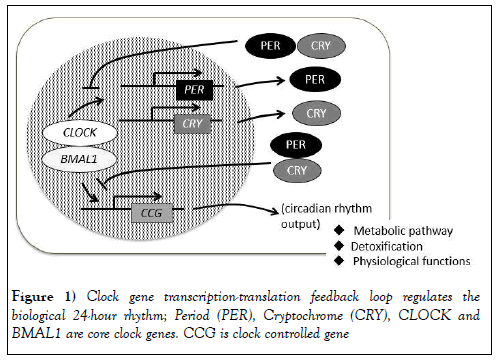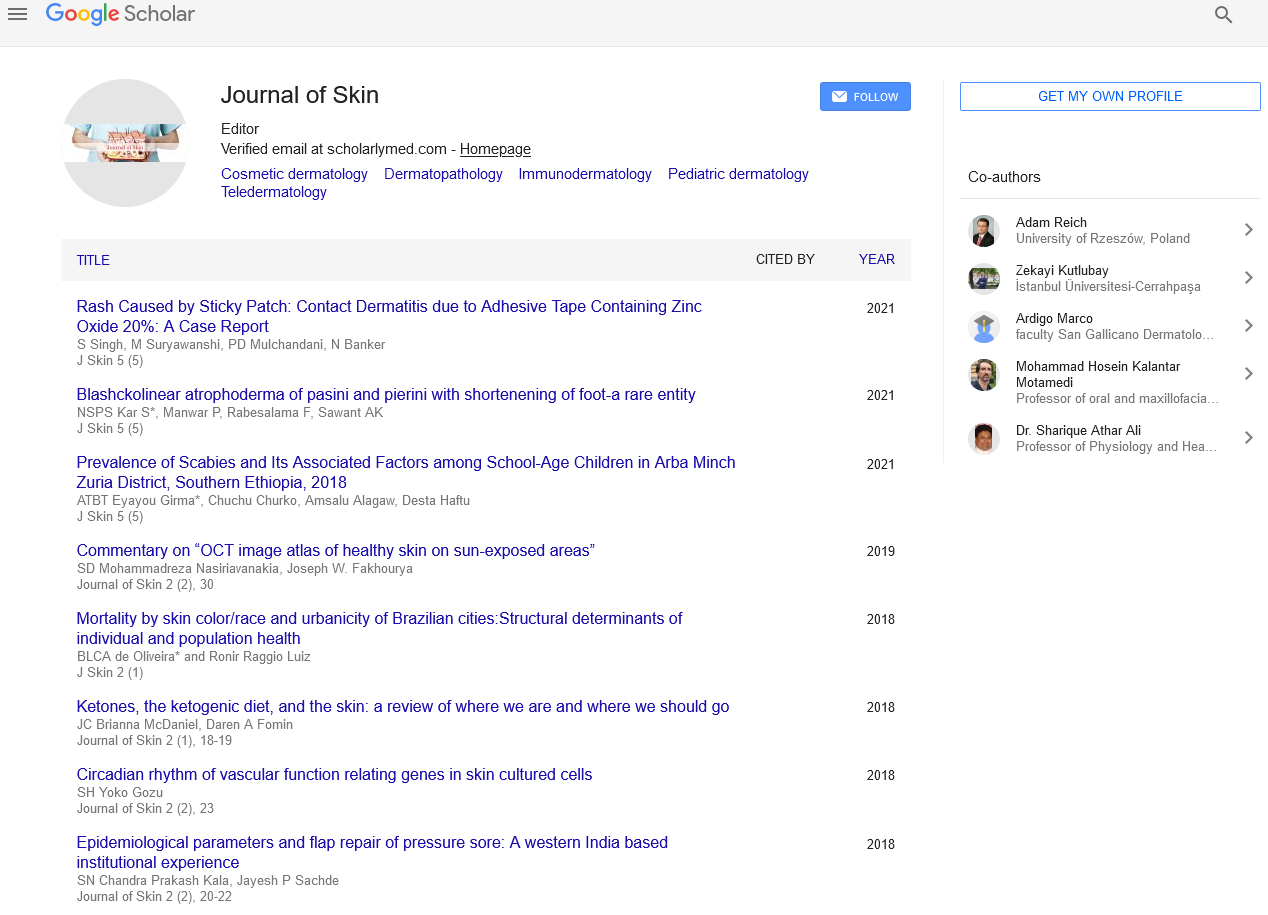Circadian rhythm of vascular function relating genes in skin cultured cells
Received: 30-Apr-2018 Accepted Date: May 15, 2018; Published: 22-May-2018
Citation: Gozu Y, Haze S. A short commentary on: “Investigation of the Daily Fluctuation of Angiopoietin 1 Gene Expression Using Cultured Skin Cells”. J Skin. 2018;2(2):23.
This open-access article is distributed under the terms of the Creative Commons Attribution Non-Commercial License (CC BY-NC) (http://creativecommons.org/licenses/by-nc/4.0/), which permits reuse, distribution and reproduction of the article, provided that the original work is properly cited and the reuse is restricted to noncommercial purposes. For commercial reuse, contact reprints@pulsus.com
Keywords
Circadian rhythm; Clock gene; Skin vascular function
The skin is the outermost organ of the body, requiring it to respond to daily environmental changes in order to maintain inner homeostasis. It is well reported that the biological clock system is a key regulator, responsible for synchronizing numerous metabolic, physiological, and behavioral processes with the 24 h daily environmental cycle (Figure 1) [1]. The molecular core of the biological clock system is expressed not only as a master clock localized in the hypothalamic suprachiasmatic nucleus (SCN), but also as peripheral clocks in various organs, including the skin [2,3].
Gozu and Haze [4] recently reported in the Journal of Japanese Cosmetic Science Society on the daily fluctuation of the skin vascular function relating genes using culture skin cells. In this report, they first established the skin cell culture system, which is available for investigations into the circadian rhythm of gene expression changes associated with vascular function. Clock genes were synchronized by use of dexamethasone, and the fluctuation pattern of PERIOD 1 (PER1) and ARNTL was used as an index of circadian rhythm. PER1 is the clock gene expressed in the daytime, while ARNTL is expressed at night; thus, the circadian timing of target genes can be predicted based on their similarity with the expression timing of these clock genes.
DNA microarray analysis is a powerful tool for studying circadian rhythm. Genes under the control of clock genes are called clock-controlled genes (CCGs) (Figure 1) and many CCGs were identified by DNA microarray analysis. Using microarrays, it was revealed that 0.9~1.9% of genes in synchronized fibroblasts were CCGs [4]. Gozu and Haze [4] also used DNA microarray analysis to investigate vascular function, in relation to gene expression rhythm in synchronized human epidermal keratinocytes and human dermal fibroblasts (HDFs) [3]. The microarray analysis predicted the daily fluctuation in gene expression levels of Angiopoietin 1 (ANGPT1), Vascular endothelial growth factor A (VEGF-A), and Vascular endothelial growth factor C (VEGF-C). ANGPT1; angiogenic factor gene expression time course of four- hour periodicity, for two days in HDFs, was similar to the PER1 fluctuation pattern. This result means that ANGPT1 gene expression level is high in the skin during the daytime. VEGFA and VEGFC gene expression patterns over two days were not showing circadian rhythm but fluctuated by dexamethasone treatment. Dexamethasone is a kind of glucocorticoid, and a surge of glucocorticoid level in healthy human being occurred in every early morning. VEGFA expression level was highest at just after dexamethasone treatment, indicative of early morning timing. VEGFC expression level was high at 12 h later from dexamethasone treatment, indicative of nighttime timing.
The effect of cosmetic substances on the expression rhythm of ANGPT1 was also evaluated [3]. Nuphar japonicum extract showed positive effects on ANGPT1 expression. As ann accelerator of ANGPT1 expression, Nuphar japonicum extract is expected to benefit for improve the skin vascular function along the optimum timing as ANGPT1 high expression level in a day.
The importance of the circadian rhythm in the context of pharmaceutical treatment is well known. Recently, clinical studies have been reported where the therapeutic efficacy was improved by optimization of dosage timing based on the timing of symptom onset or phase modulation of biological rhythm [5]. These therapeutic strategies are called “chronotherapy”. Vascular functions, such as blood pressure, blood flow, and heart rate show daily variation, and cardiovascular disease also shows circadian onset timing; thus, a chronotherapeutic approach to cardiovascular disease has been put forward.
Given the results on ANGPT1 gene expression rhythm in vitro [3], it is worth investigating how skin vascular function varies over the circadian cycle in vivo. Considering the circadian rhythm’s influence on skin vascular function, “chrono beauty” may represent a new approach for evaluating cosmetics aimed at achieving healthy skin.
REFERENCES
- Bansal C, Scott R, Stewart D, et al. Decubitus ulcers: A review of literature. Int J Dermatol. 2005;44:805-10.
- Jin X, Shearman LP, Weaver DR, et al. A molecular mechanism regulating rhythmic output from the suprachiasmatic circadian clock. Cell. 1999;96:57-68.
- Tanioka M, Yamada H, Doi M, et al. Molecular clocks in mouse skin. J Investig Dermatol. 2009;129:1225-31.
- Gozu Y, Haze S: Investigation of the daily fluctuation of angiopoietin 1 gene expression using cultured skin cells. J Jpn Cosmetic Sci Soc. 2017;41:9-14.






